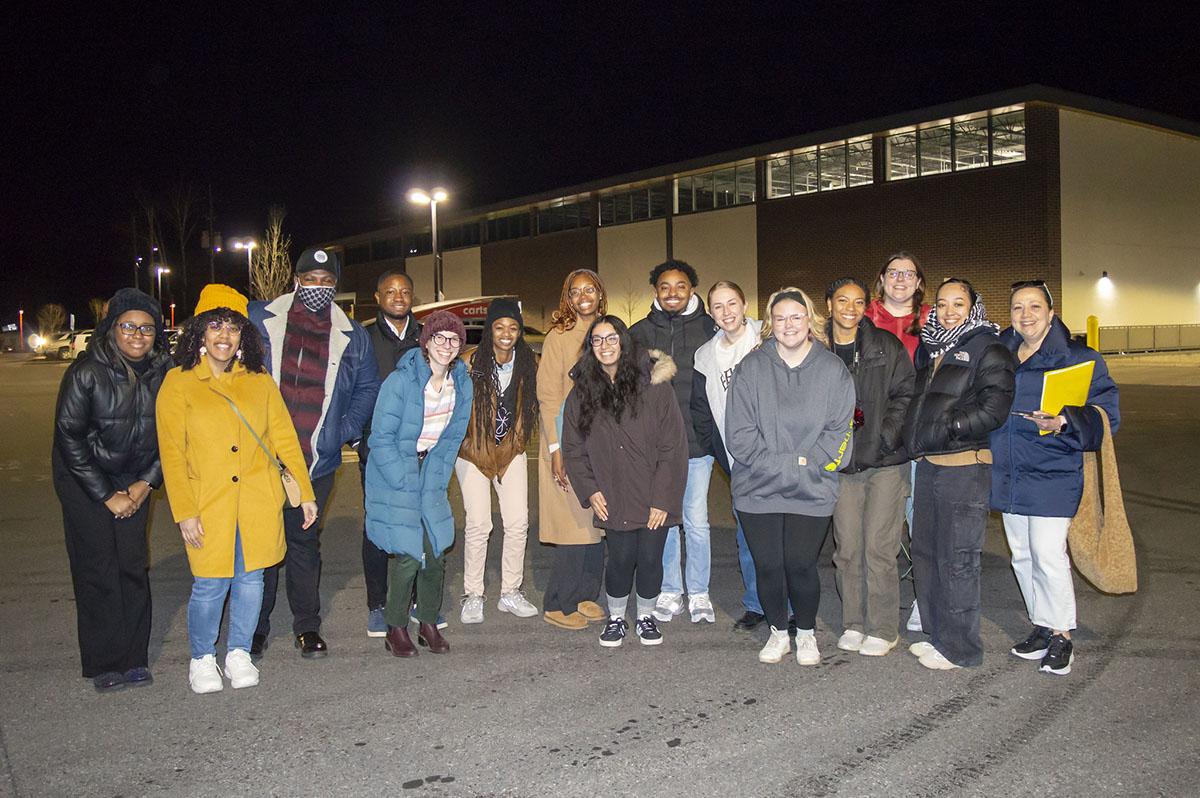A doctor’s office, grocery store or part-time job is just a quick walk or bike ride away for most University of Maryland students. But, for many people who live and work in other communities in College Park, running errands without a car is stalled.
Recommendations and tangible interventions that UMD students developed this semester in the new course “15-Minute Cities in College Park” may help improve access to local amenities for residents through the 15-minute city concept.
A popular urban planning ideal geared to reduce car dependency and improve quality of life, the 15-minute city puts daily necessities like shopping, health care, education, greenspace and employment within a 15-minute walk, bike or transit ride from any point in a city. The concept gained particular attention after the COVID-19 pandemic and has been used to guide development in cities across the world such as Barcelona, Spain, Laramie, Wyoming and Ann Arbor, Michigan.
“College Park is a community with very distinct neighborhoods; I was really interested in seeing what the opportunities and challenges are for creating more walkable, livable neighborhoods within these communities,” said urban studies Lecturer Riem Elzoghbi, who taught the course as part of the university’s Partnership for Action Learning in Sustainability (PALS) program.
Working with College Park’s Department of Planning and Community Development, students from urban planning, architecture, public policy and public health identified four communities that have the most potential of being transformed into 15-minute neighborhoods: Lakeland, Hollywood, Calvert Hills and Old Town. The class used case studies from cities comparable to College Park as a guide to address issues on zoning, amenities, circulation, accessibility and traffic flow for the neighborhoods.
When it comes to transportation, access to places like the College Park library, health facilities and housing is hampered by the lack of dedicated bike lanes, sidewalks and bus stops.
“Offering more alternative forms of transportation besides the automobile is better for the environment and more equitable to all the residents of the city,” said Miriam Bader, the director of the College Park Department of Planning and Community Development.
The Department of Planning and Community Development was particularly interested in learning how residents of historic neighborhoods like Lakeland can benefit and expand their engagement to College Park.
Rerouting Metrobus and extending the Metro station could give residents more access to resources, the students found. Besides Rhode Island Avenue, local roads within Lakeland do not have dedicated bike lanes, and the neighborhood has limited parking areas for bikes and scooters.
More bus stops throughout the Calvert Hills neighborhood could improve residents' access to grocery stores and the Metro. Rezoning the Hollywood neighborhood retail area could offer a neighborhood hub and spaces where the community can gather, such as communal greenspaces. Implementing dedicated bike lanes and wide, accessible sidewalks as well as clear signage could help Old Town and Calvert Hills potentially function as “20-minute neighborhoods,” which covers more mileage in these areas and accommodates higher concentrations of residents.
Urban planning student Mimi Sanford M.C.P. ‘24, learned that College Park residents can ride the UMD bus service for free by filling out an application through the city. Although the UMD shuttle is largely campus-oriented, it has a lot of routes that go into neighborhoods and other hot spots in and around College Park.
Based on their research and findings, architecture graduate student Rafael Sanabia believes that the concept of 15-minute cities is a strong foundation for how we think about our built environments, cities and neighborhoods, and the effort to make things more sustainable for their communities. Through this course, he learned that College Park has a lot to offer.
“Outside of the University of Maryland, the City of College Park truly is a place full of history, people, and defining places that make it special,” he said.

